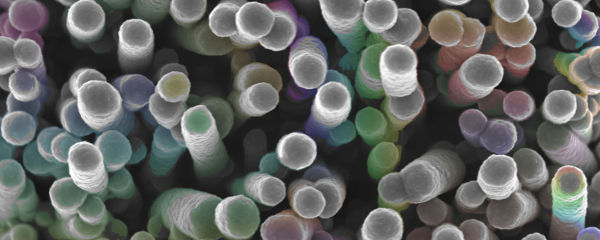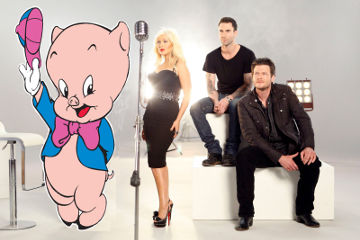What I’ve Learned:
“Synthetic genomics: when regular old DNA just won’t do.”
Genomics is the study of and the fiddling with (science term) an organism’s DNA. So naturally, you might think that “synthetic genomics” is studying and fiddling with DNA while wearing polyester.
It’s not. From what I’ve seen of most biologists’ wardrobes, the polyester thing is pretty much implied in all of genomics. And most weekend parties.
Instead, synthetic genomics is a particular style of fiddling with DNA that uses components and rules that nature hasn’t gotten around to trying yet.
(Because nature tends to be very busy doing other things. And in her spare time, distracted by all the polyester.)
There’s a big difference between sciences like “genetic modification” or “genetic engineering” and synthetic genomics. All sorts of organisms’ genomes have now been modified in the lab — corn, for instance, and glow-in-the-dark fish, and possibly Jocelyn Wildenstein. But in these cases, the genes engineered into the DNA came from other species in nature, and followed the usual rules for how DNA works.
(Not how faces work, necessarily. But at the DNA level, it’s all textbook. And usually a difference of just one or two genes.)
But synthetic genomics is different. Here, the usual rules go out the window. Recently, a team of scientists used computers to redesign a chromosome found in yeast, synthesized the new sequence and plugged it back into real yeast cells.
Why? I’m not entirely sure. Maybe they’re trying to create glow-in-the-dark beer, or sandwich bread that talks to you while you eat it. Both of which I’m in favor of — preferably in the same meal. But in the meantime, it’s a monumental bioengineering achievement, and could produce more efficient yeast.
No doubt the Pillsbury dough boy and Budweiser Clydesdales are salivating over that.
Another team is trying to modify pig DNA to look more similar to humans. Which, of course, because a real-life Porky Pig is an obvious choice to be the next judge on The Voice. But actually, it’s so pig lungs can be yanked out and transplanted to save humans with terminal lung disease, while eliminating the problem of foreign tissue rejection.
Which just goes to show, everything is better with bacon. Including cross-species thoracic surgery. Mmmmmm, bacon.)
The biggest news to come out of synthetic genomics recently is that the DNA inside every living thing — from bacteria to badgers to Barbara Walters — can be expanded upon. Improved. Turned to eleven.
Announced just this week, scientists at the Scripps Research Institute whipped up a strain of E. coli bacteria that don’t just use the usual four basic building blocks of DNA, but instead use six.
This is big news. It’s like when Columbus turned Europeans on to a whole new continent, or Lewis and Clark followed Sacagawea through the Northwest, or the day you discovered you like actually dark beer. Whole new frontiers open up, full of possibility and hangovers and grizzly bear attacks.
And now, full of semi-synthetic genetically-fiddled-with E. coli., like little microscopic scientists wearing polyester pants. Sometimes the bacteria don’t fall far from the tree.
In practical terms, an expanded DNA alphabet could lead to revolutions in genetics, bioengineering and the ability to mass-produce useful proteins that have never before existed.
Whether that will finally improve biologists’ wardrobes is still up in the air. Science can only do so much.





